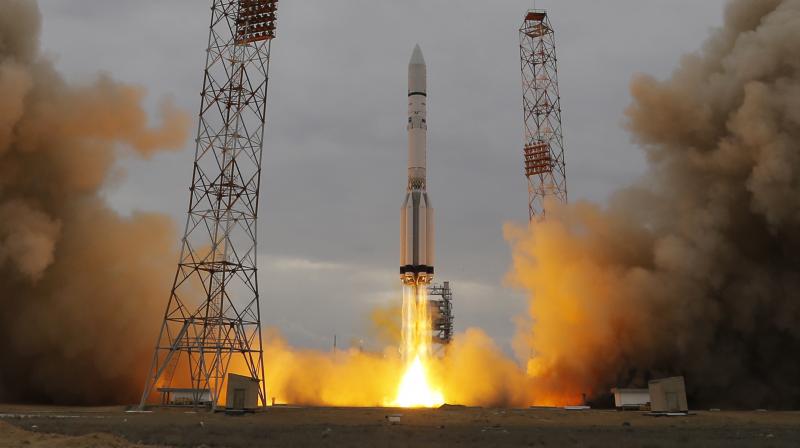BAIKONUR, KAZAKHSTAN: Two Robotic shuttles on Monday 14 March, started a seven-month trip to Mars as a major part of an European-Russian unmanned space mission to search life footprints on the Red Planet.
Russia’s Proton skyrocket carrying the shuttle sent into space at the Russian-worked Baikonur cosmodrome in the Kazakh steppe at 0931 GMT as per procedure, said by Roscosmos and ESA. Roscosmos said the rocket launch had taken place “successfully”.
ExoMars 2016, a combined effort in the middle of ESA and Roscosmos, is the 1st part of a two-stage search aiming to answer questions about the presence of life on Mars. The ESA has said that our aim was to get facts of “whether Mars is ‘alive'”. With suite of novel instruments, the Trace Gas Orbiter (TGO), is calculated the time to touch the base of Red Planet in October after an adventure journey of 496 million kilometers (308 million miles).
TGO will take photograph of the Red Planet and investigate its air, splitting from Mars lander named Schiaparelli days before entering Mars’ climate. The second stage, a Mars rover is due for launch in 2018, appears likely to be postponed over some budgetary distresses.

One key goal is to examine methane, a gas which on Earth is made in wide part by living organisms, and hints of which were detected by past Mars missions. “TGO will be like a biggest nose in space,” said by ExoMars project researcher.
TGO will examine Mars’ methane in depth detail than any past mission, said ESA, in the way to try and determine its likely origin. Schiaparelli – named after a nineteenth century Italian space expert – will spend few days measuring climatic situations on the Red planet including occasional dust tempests and cover the way for the rover’s later entrance.

Space is one of the a few areas of collaboration between Moscow and the West that has not been harmed by geopolitical pressures originating from the emergencies in Ukraine and Syria.


